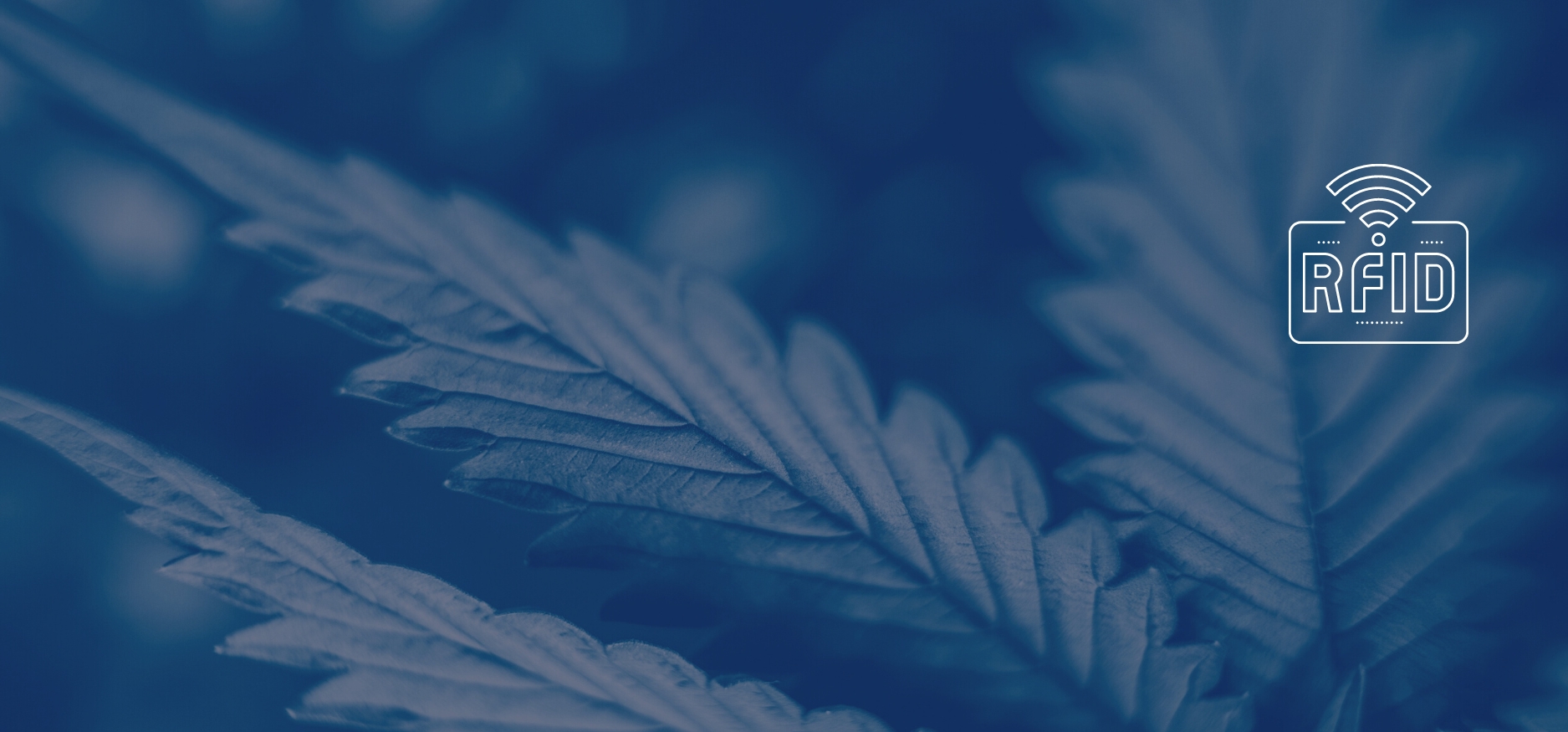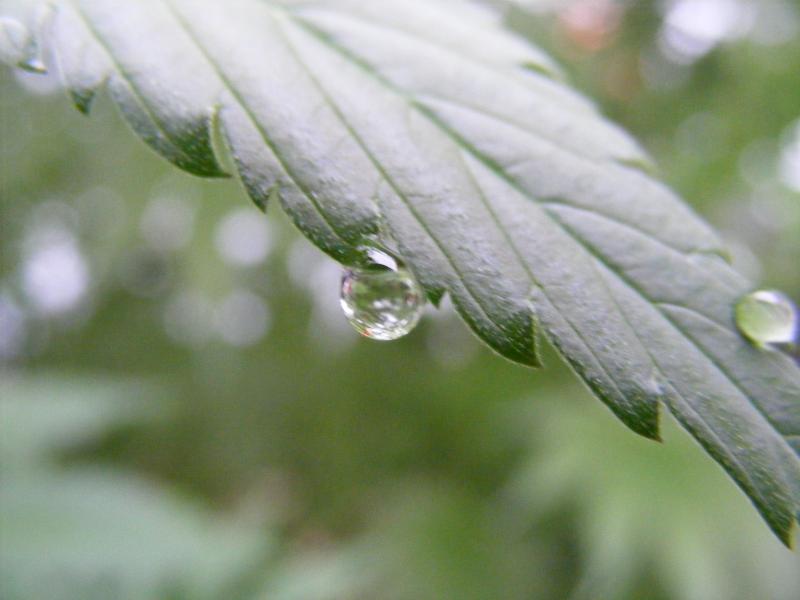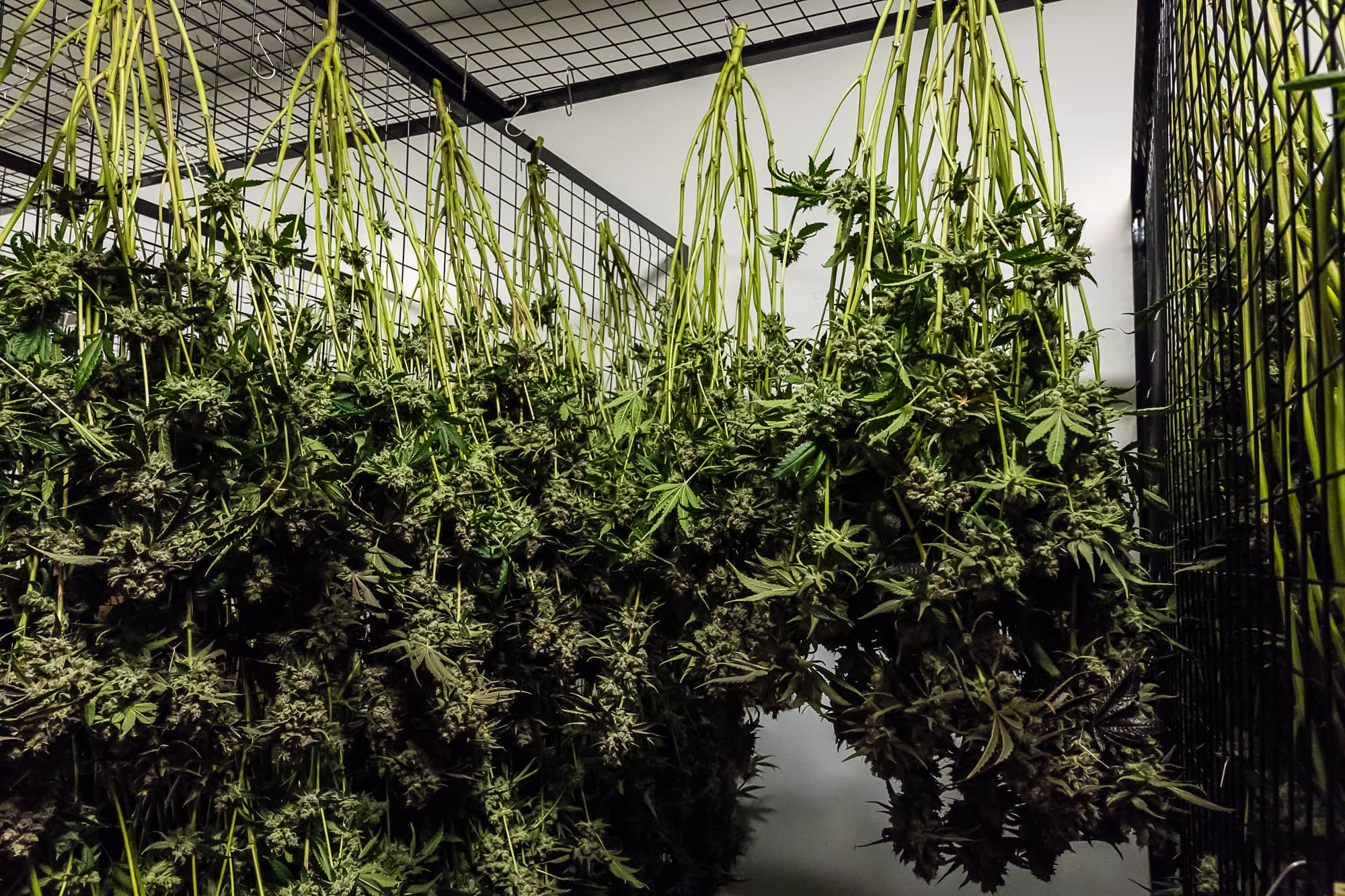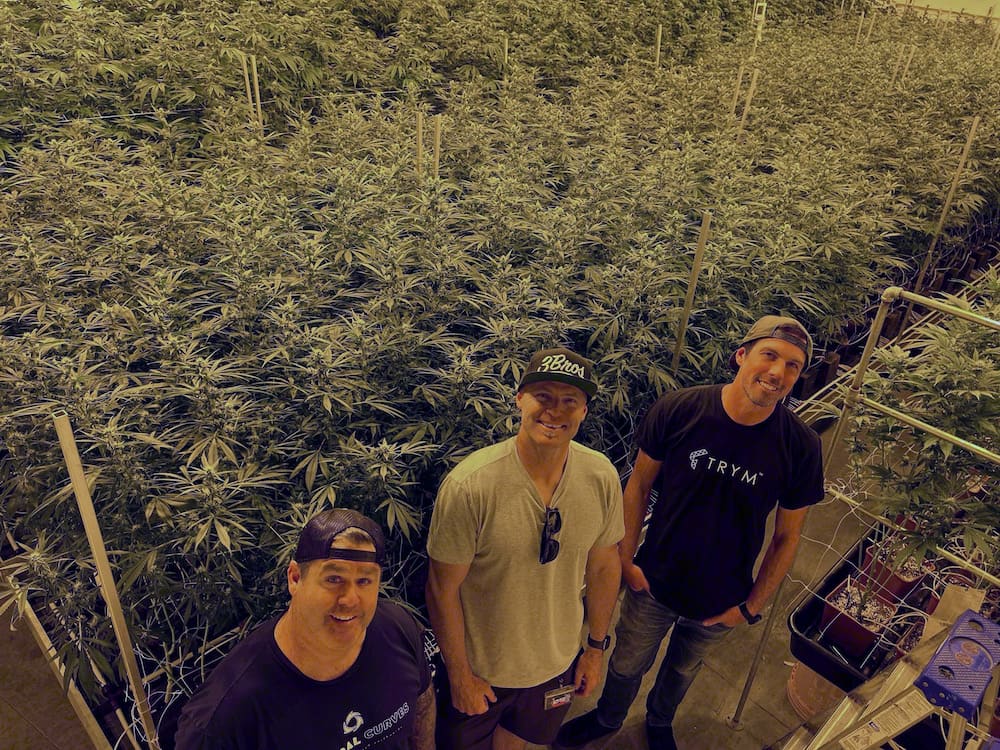The agriculture industry has been adapting to technological innovations over the last decade. The cannabis industry, moving at a mile a minute, is also seeing an increasing number of cannabis cultivators looking to add automation to their operations.
Grow room automation can bring huge leaps of innovation to a cultivation operation. Temperature, humidity, ventilation, and carbon dioxide (CO2) concentration can all be controlled using automation technology.
Automating your indoor grow room or greenhouse not only allows you to control its environment remotely, but can save money by reducing labor costs and lowering utility bills.
It’s essential to design the system properly to ensure the components will work perfectly together, given the specific cannabis facility requirements.
In this guide, we’ll cover what automation means for cannabis grow rooms, how to automate your grow room, and finally – automation strategies for commercial cultivators.

What is grow room automation?
Grow room automation is the introduction of software and hardware that centralizes the control of grow equipment like lights, exhaust fans, humidifiers and irrigation systems.
Sensors and controls are programmed to respond to environmental changes. The feeding and climate parameters are very specific. Any drift from optimal range can mean a ruined crop. For example, in the flowering stage, plants can begin to harbor mold due to unchecked humidity. Equipment that visualises and reports on the consistency of those conditions brings big value to those looking to optimize their crop production.
Commercial growers who automate their feeding schedules will need real-time data to ensure plants are getting nutrients and water, when they need and also exactly how much they need. As these values change over the lifecycle of the plants, data tracking and reporting is vital to ensure your “secret sauce” process is executed correctly.
Why is it important for commercial cannabis growers to automate their grow room?
As operations scale, they become more difficult to monitor and operate. Automation becomes a necessity for managing large operations because consistency is everything for a commercial cannabis business seeking profitability.
Profit margins are getting squeezed as the industry grows and consolidates. Automation reduces the time and labor that goes into performing all daily duties. It also helps to optimize resource usage, lowering costs further. Ultimately, the yield and quality of every harvest are critical for cannabis business success. Automation offers environmental control so that the recipe for success can be programmed, executed and repeated effortlessly.
Grow Room Automation Benefits
Some of the many benefits of greenhouse or indoor grow room automation are::
- Remote access to monitor and control growing conditions like temperature, humidity, CO2, root zone data, etc
- Reduction of labor hours for small tasks like turning fans or lights on/off
- Lower utility bills by ensuring that equipment is functioning at the optimal levels and correct times
- Create an optimal growing environment and increase yields and quality

What grow equipment should I automate?
The management of environmental conditions can be centralized in a grow room controller, with numerous sensors and hardware sending data back. Data is power and the key to optimizing cannabis cultivation processes and performance.
Grow light automation
Grow lights are likely the most important investment for the growroom – so it’s essential to ensure that they’re only used when necessary. Lighting controllers, ballasts and timers allow remote access and scheduling. Dimming lights is a whole strategy on its own, like when to dim and how much to mimic changing seasons that trigger hormonal responses in plants. LED lights emit less heat than other bulbs and help keep the temperature down in the grow space.
One company has revolutionized grow light automation for commercial greenhouse cultivation. Argus’ DLI (Daily Light Integral) Control Program delivers a standard DLI despite daily and seasonal weather variations. They’ve developed an algorithm to predict the available natural light as the basis for supplementary lighting control. The plants get exactly how many lumens they need while the operation’s energy consumption is made more efficient.
Another lighting automation technology, called Light Spectrum automation, uses software to control the color of light emitted by LED lights. Red, blue and green light each promote different responses in plants and a strategy for programming light spectrum across plant lifecycles can be achieved by automating grow lights.

Grow Room HVAC and CO2 automation
When the environmental grow room controller connects to other equipment in the grow room, a sharp change in temperature could trigger fans and air conditioners to come on or dehumidifiers to turn on or off when needed to ensure optimal growing conditions.
Grow room CO2 levels are religiously tracked for consistency. Fresh air and proper CO2 levels help the plant make energy via photosynthesis. CO2 sensors and controllers can be programmed to automate equipment to keep the room at the optimal CO2 level at all times.
Automating grow equipment brings peace of mind in knowing that everything is running smoothly. The ability to integrate CO2 sensors and controllers gives full visibility into room or greenhouse conditions from anywhere with an internet connection.
Fertigation Automation
Hand watering is not a viable option for commercial cannabis cultivators. Fertigation systems, commonly used in agriculture, are the key to scaling up a cultivation operation.
Automating nutrient delivery allows the grower to give the plants exactly what they need, when they need it. The automation of feeding cuts down on labor time, human error from mixing incorrectly, and excess nutrients. Keeping the feeding process consistent in every stage of the plant’s life supports the goal to maximize yields.
Temperature Control
Controlling heat in the grow room is one aspect of indoor cultivation that tends to be a challenge for many growers. While some cultivars or strains can handle higher temperatures, cannabis plants typically start to show signs of stress above 85°F. To avoid the negative consequences from pushing a plant too far, temperature must stay well below the threshold.
Grow room climate controllers allow for remote and on-site monitoring. Direct temperature control will ensure plants are always thriving in their sweet spot. When ‘crop steering’ it’s more important than ever to have full control of your growing environment. A comprehensive visualization of root zone and climate data support crop steering analysis and decision making. Each new round is an opportunity to improve. Adjusting the growing conditions over time is necessary as the plants get bigger and plant growth progress.
Humidity Control
Low humidity causes plants to respire more than in an optimally humid environment. More moisture is lost from the plant than can be replenished through the roots. In a low humidity environment, plant pores close up to prevent more water loss, thus reducing the CO2 they take in from the air. Cell death is the next progression within the plants. Humidity control is crucial to maintain proper plant health.
In most cases, however, humidity levels that are too high can result in bud rot or other diseases.
To keep humidity in its optimal range, you must:
- Ensure the space is properly sealed and insulated
- Monitor lighting and maintain a tight temperature range
- Increase cool air supply
- Make sure there is no stagnant water in the trays which increases baseline humidity in the grow room
- Use an appropriately sized dehumidifier to handle the demands of plant growth
- Place humidity sensors in strategic places in the grow room to get an accurate reading
Ventilation
In a natural environment, wind strengthens outdoor cannabis plants and their stalks which grow to support the weight of the cannabis flowers. In a greenhouse or indoor cannabis cultivation facility, a good ventilation system can mimic natural winds to induce the same plant responses.
A proper ventilation system can:
- Reduce the likelihood of mold or powdery mildew from forming
- Protect your plants from pest infestations
- Facilitate the control of temperature and humidity in the cannabis grow room
- Help strengthen the stems of your plants

Optimal grow room design
While it may seem obvious, the decisions you make in the facility design stage will greatly impact how systems will operate and most importantly, how they will perform.
To keep it simple, when designing your grow room you should consider the following:
- First, plan your grow methodology. Will you be growing cannabis hydroponically, aeroponically or in dirt?
- Finding the most suitable space (good climate, cheap rent or cost to build, high market prices for your plant products)
- Configure your space to optimize employee workflows and adhere to regulations (consider how much space you’re dedicating to flowering, vegetative, propagation and mother plants)
- Set yourself up for good light coverage. In an indoor environment you must plan uniform grow light distribution, while in a greenhouse you’ll want to optimize supplemental lighting for sunrise, sunset and daylight extension. In both cases, beware of losing light to your aisles and walls.
- Make sure you have adequate equipment for sufficient airflow between the plants
There are plenty of other considerations, like if you want to grow vertically or on a single-level. Always be cognizant of your local regulations to remain compliant.
Once you know each of the factors above, you can begin incorporating automation into your design. Remember that all environmental factors work together, so you’ll want to think about the various hardware and equipment in your grow room in a cohesive manner.
What are the best grow room automation tools and software?
There are many systems out there to meet most budgets, from simple, semi-automated setups to more complex and fully integrated systems.
In any given grow room are countless variables to track and analyze. Automating data collection is the key to increased profitability. The ability to review the data over time provides priceless insights. It gives growers the power to formulate the correct combination of environmental conditions and their cadence throughout the grow cycle.
Fertigation
Automating feeding might be one of the most important things to automate. One company named Rhythm does just that. Their Advanced Fertigation Systems (AFS) use the batch method of nutrient preparation and delivery. Sensors can be integrated into their system and data sent to central reporting on nutrient uptake.

Climate and Root Zone
Trolmaster has a wide offering of sensors and environmental controls to facilitate crop steering and access a wide volume of data on your grow space.
Their Carbon-X CO2 System provides critical monitoring of CO2 levels for up to 13 separate zones / rooms. The system can also control various devices such as exhaust fans, dampers, and main CO2 valves.
Trolmaster’s Hydro-X system is a common one as well and the best value for the money. It can control most lighting brands, HVAC systems, mini-split air conditioners, commercial dehumidifiers and humidifiers, as well as CO2 generators or regulators.
The best part? Trym integrates with Trolmaster and centralizes all the environmental data into our cultivation management software. Plants, people and data are all connected in one software – key to making strategic decisions that will increase yields and quality.
Are there any risks or downsides to grow room automation?
Adding automation to your grow rooms is a great investment for both large and small greenhouse or indoor cannabis operations, but it’s important to understand that there are risks involved with these systems.
Grow room or greenhouse automation is not a ‘set it and forget it’ system. The cultivation team must ensure the system works by checking functionality of both the hardware and the link and accuracy of data in the software. Regular in-person checks will ensure all is working as expected. Most equipment will have alerts or notifications when something amiss arises. Responding to these alerts quickly and correcting the issue can mean the difference between a lost crop or just a mishap.
To ensure the best outcome make sure you’re aware of these common pitfalls before automating your grow room:
- Defective grow lamps or ballasts can cause damage which may not be detected until it’s too late.
- Malfunctioning grow equipment can also cause grow rooms to overheat during hot days, posing fire risk.
- Dehumidifiers that aren’t monitored, may fail and cause humidity levels to rise which could result in mold.
Make sure you have the right tools and knowledge before automating your grow room. If done correctly, it will provide operational efficiency, in labor and energy, as well as increased profitability. As the cannabis industry matures, cultivators must integrate technology to scale and grow their market share.



















